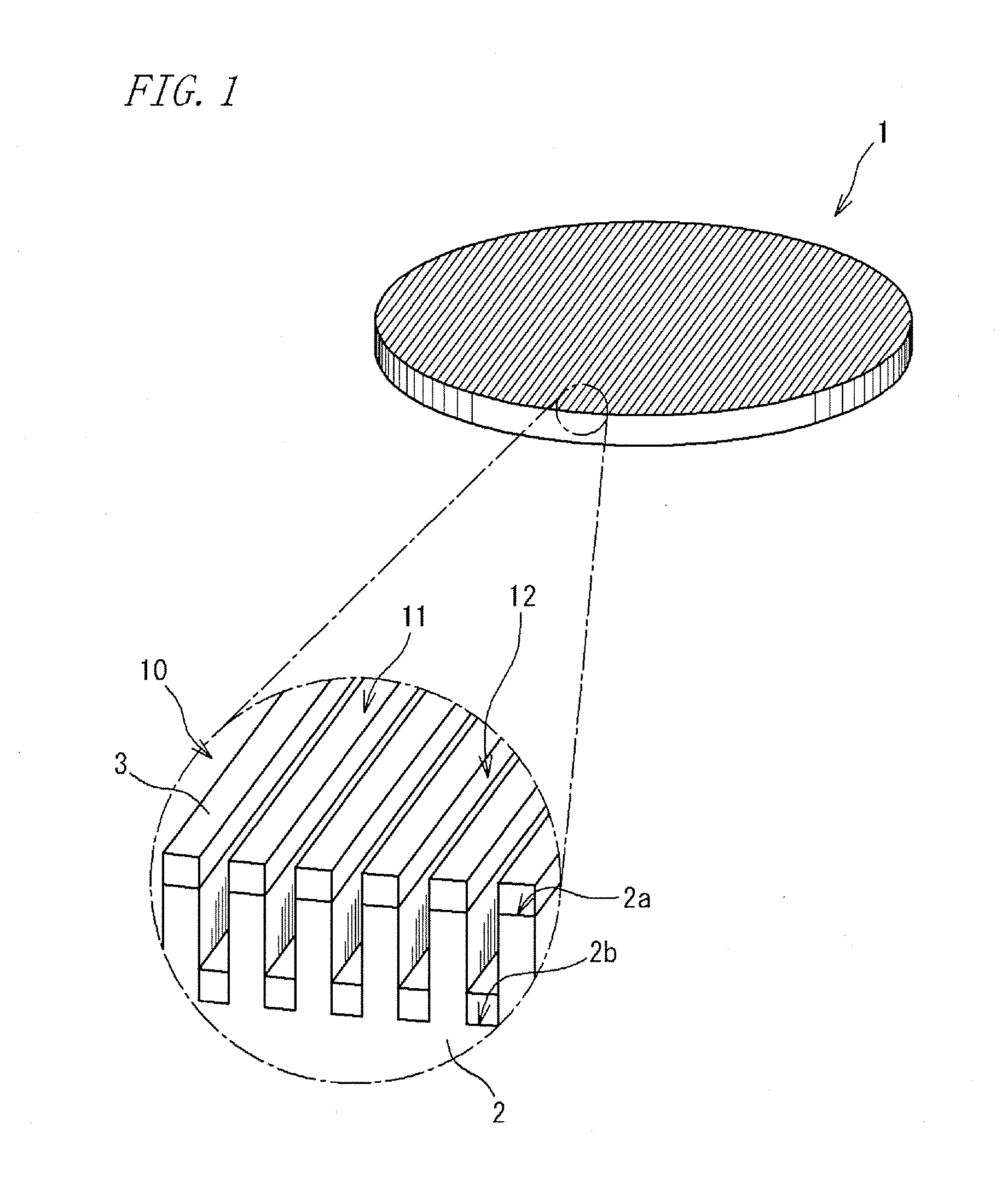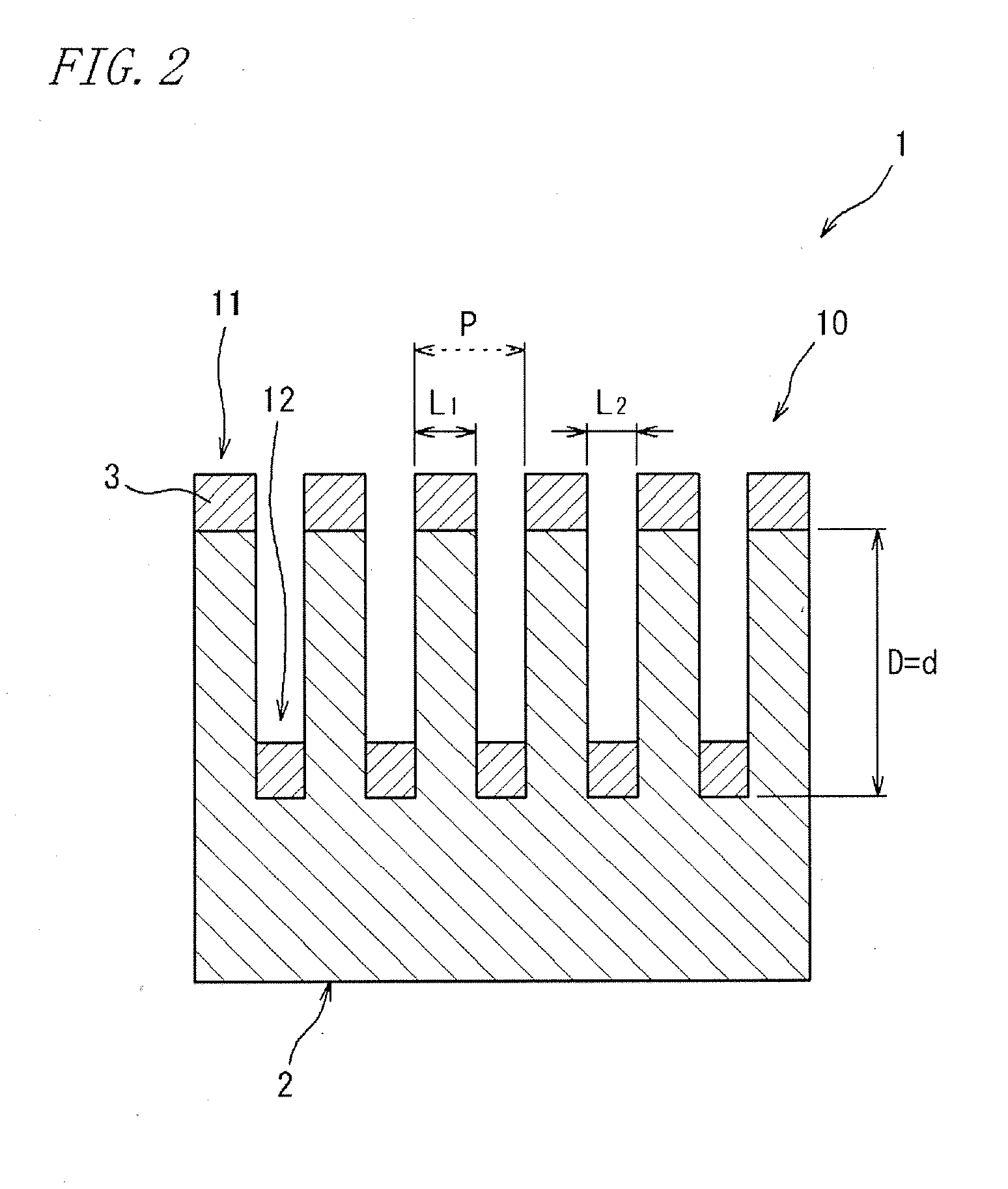Optical component
a technology of optical components and components, applied in the field of optical components, can solve problems such as processing quality problems, and achieve the effect of small size and easy adjustment of the optical axis during us
- Summary
- Abstract
- Description
- Claims
- Application Information
AI Technical Summary
Benefits of technology
Problems solved by technology
Method used
Image
Examples
embodiment 1
Optical Component
[0035]The section below will describe an embodiment of an optical component of the present invention in detail with reference to the attached drawings. In the description below, the optical component of the present invention will be described by an example of an optical element for converting a polarization state of carbon dioxide laser (transmission-type polarization filter). In the following drawings, a concave-and-convex structure formed on the surface of the optical component is illustrated in an exaggerated manner for clear understanding.
[0036]FIG. 1A is a perspective view illustrating an optical component according to one embodiment (Embodiment 1) of the present invention. FIG. 1B is a perspective view for explaining a main part showing a concave-and-convex structure in the optical component according to Embodiment 1.
[0037]An optical component 1 shown in FIG. 1 is a transmission-type polarization filter that allows carbon dioxide laser light to transmit theret...
embodiment 2
Optical Component
[0049]FIG. 3 is a cross-sectional view for explaining a main part showing a concave-and-convex structure in an optical component according to another embodiment (Embodiment 2) of the present invention. The optical component 1 shown in FIG. 3 is different from the optical component 1 according to Embodiment 1 in that both surfaces of a substrate body 2 have the same concave-and-convex structures 10a and 10b.
[0050]In the optical component 1 according to Embodiment 2, a difference in phase delay between polarization components of the carbon dioxide laser light is proportional to the depth that is the sum of groove depths of groove sections 12a and 12b of respective two concave-and-convex structures 10a and 10b.
[0051]Thus, in order to cause the phase difference that is similar to the one in the case of the optical component 1 according to Embodiment 1 to occur, it is sufficient to form the concave-and-convex structure 10 that has a groove depth of ½ (d / 2) as compared ...
embodiment 3
Optical Component
[0055]FIG. 4 illustrates an optical component according to still another embodiment (Embodiment 3) of the present invention. The optical component 1 of Embodiment 3 shown in FIG. 4 is different from the optical component 1 according to Embodiment 1 in that the optical component 1 of Embodiment 3 shown in FIG. 4 includes two substrate bodies 2a and 2b having the same concave-and-convex structures 10a and 10b, respectively.
[0056]The optical component 1 according to Embodiment 3 includes: a member 1a having a substrate body 2a including the concave-and-convex structure 10a; and a member 1b having a substrate body 2b including the concave-and-convex structure 10b. In the optical component 1 according to Embodiment 3, the substrate bodies 2a and 2b are disposed so that the surfaces thereof are spaced with a predetermined space therebetween and so that the respective concave-and-convex structures 10a and 10b are directed in the same direction.
[0057]Similarly, in the optic...
PUM
| Property | Measurement | Unit |
|---|---|---|
| thickness | aaaaa | aaaaa |
| diameter | aaaaa | aaaaa |
| depth | aaaaa | aaaaa |
Abstract
Description
Claims
Application Information
 Login to View More
Login to View More - R&D
- Intellectual Property
- Life Sciences
- Materials
- Tech Scout
- Unparalleled Data Quality
- Higher Quality Content
- 60% Fewer Hallucinations
Browse by: Latest US Patents, China's latest patents, Technical Efficacy Thesaurus, Application Domain, Technology Topic, Popular Technical Reports.
© 2025 PatSnap. All rights reserved.Legal|Privacy policy|Modern Slavery Act Transparency Statement|Sitemap|About US| Contact US: help@patsnap.com



